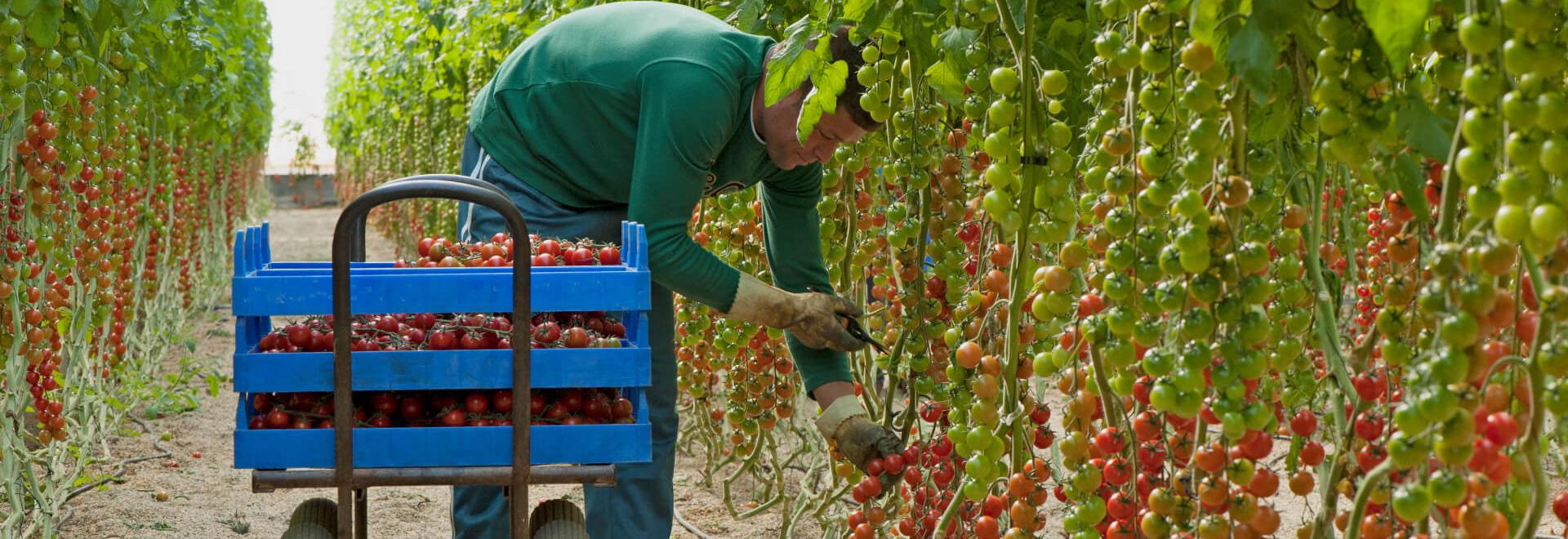In modern horticulture, properly training plants is not just a routine task—it’s an essential part of achieving successful crop productivity. A good training system directly affects work efficiency, fruit quality, and overall sustainability.
In crops such as tomatoes, cucumbers, or peppers, growers mainly use two methods to support stems: manual stem twisting and the use of fixing clips. Both share the same goal but differ notably in technique, required labor, and impact on productivity.
Twisting: A traditional technique that requires experience
For years, twisting has been the most common method. It involves manually wrapping the plant stem around the support string. It’s a classic approach that requires no additional materials and, when done correctly, can even favor a higher number of tomatoes per kilometer of line.
However, its effectiveness largely depends on the operator’s skill. When the stem is over-twisted or incorrectly handled, it creates mechanical stress, reduces sap flow, or damages the growing tip—slowing development or making the plant more vulnerable to fungal diseases.
From an operational standpoint, twisting requires more specialized and costly labor, with significantly longer installation times to cover the same area. This translates into rising costs in agricultural markets facing a shortage of skilled workers.
Clipping: Innovation and precision in service of the plant
Clipping introduces a faster and more ergonomic approach to plant training. By using clips, the stem is gently attached to the support string without twists or pressure that could compromise growth.
In professional growing environments, it’s estimated that clipping allows the installation of between 600 and 900 plants per line—a substantial operational gain compared to the traditional manual twisting method. This operational range optimizes team efficiency, reduces labor costs per trained plant, and maximizes greenhouse productivity.
From an agronomic perspective, clipping also minimizes the risk of stem or growth tip damage by eliminating excessive twisting. In environments where consistency and speed matter—such as intensive greenhouse tomato production—this advantage can make the difference between a stable crop and one with high variability.
Agronomic and operational considerations
- Team experience: If your team has highly skilled workers experienced in twisting, this method can still be viable. However, the lack of qualified staff makes it a high operational risk. Productivity loss during the training period of new workers is estimated at around four months before they become fully autonomous.
- Crop scale: In large-scale productions or where time is critical, clipping is the most suitable technique to maintain uniformity and reduce working time.
- Stem thickness and growth habit: In crops with thicker stems or where the plant requires less torsion, clipping is usually more advantageous.
- Total cost vs specialization: While twisting doesn’t require extra materials, the labor costs and risks can outweigh the savings. Moreover, productivity loss during worker training—estimated at about four months—must be considered. In contrast, clipping involves materials (clips), but the reduction in labor and errors can easily offset this cost.
Towards more efficient and sustainable horticulture
In professional horticulture, the trend is clear: prioritize techniques that offer stability, speed, and lower labor costs without compromising crop quality. In that sense, clipping is a logical evolution from twisting in many scenarios.
Nevertheless, the final choice should not be binary or automatic. It must be based on a detailed analysis of the crop, plant type, team experience, labor costs, and production goals. The best technique is the one that optimizes the balance between yield, fruit quality, operational cost, and risk.
In short: if the goal is to maximize efficiency, minimize the need for skilled labor, and reduce operational variability, clipping is currently the most suitable option for demanding horticultural production. Yet, in highly specialized settings with expert workers and specific crops, twisting still maintains its technical validity.
Contact our horticulture experts to discover how to adapt the most suitable plant training technique to your crop’s specific characteristics.
